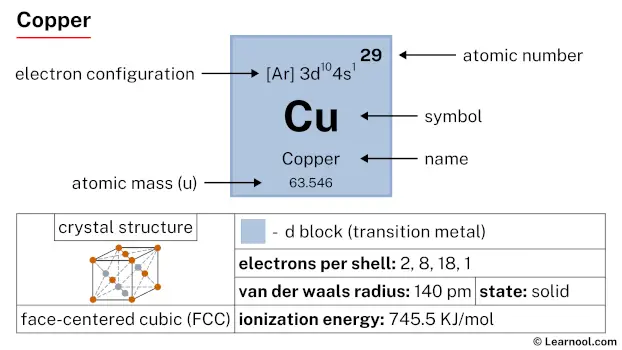
Copper (Cu) is a chemical element of the periodic table, located in the group 11 and the period 4, and is having the atomic number 29. It is a soft, ductile and malleable, reddish-orange transition metal, which is named after Cyprus, principal mining place in the Roman era.
On periodic table
| group | ⇨ | 1 | 2 | 3 | 4 | 5 | 6 | 7 | 8 | 9 | 10 | 11 | 12 | 13 | 14 | 15 | 16 | 17 | 18 |
| period | ⇩ | ||||||||||||||||||
| 1 | 1 H 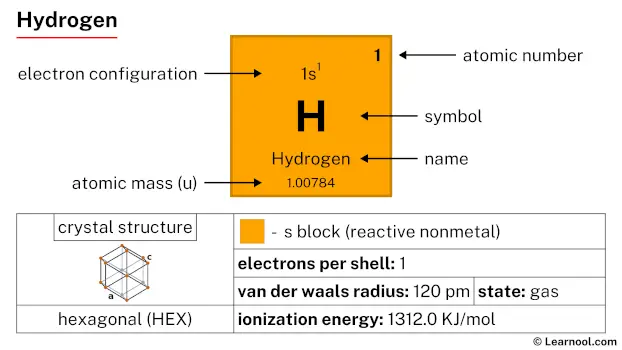 Hydrogen |
2 He  Helium |
|||||||||||||||||
| 2 | 3 Li  Lithium |
4 Be 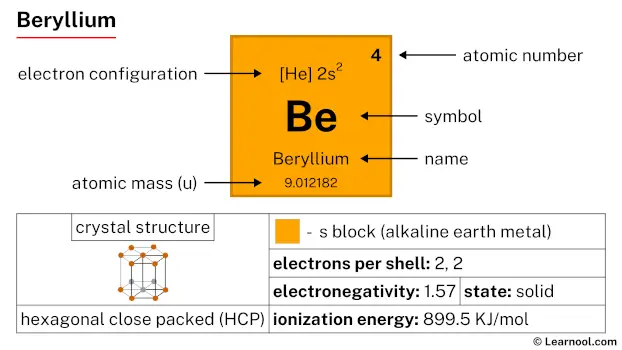 Beryllium |
5 B 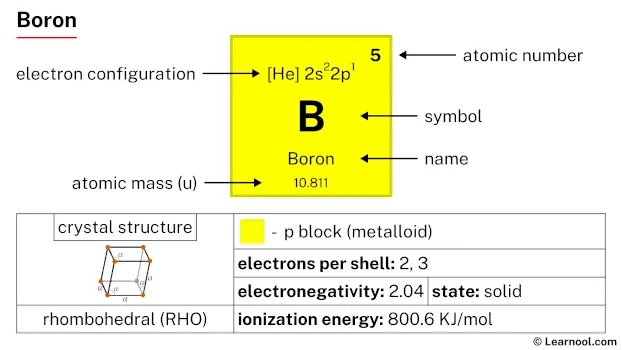 Boron |
6 C  Carbon |
7 N 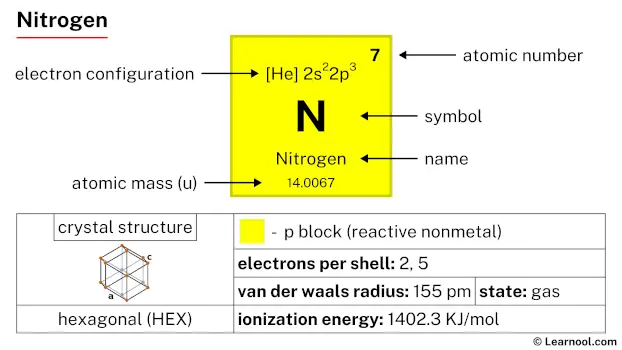 Nitrogen |
8 O 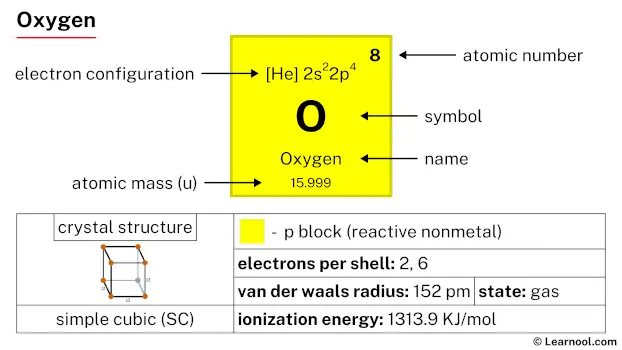 Oxygen |
9 F 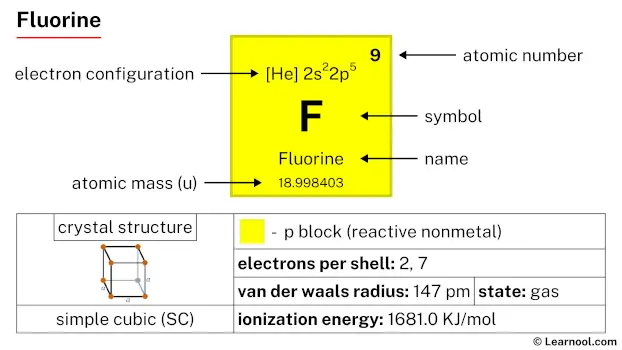 Fluorine |
10 Ne 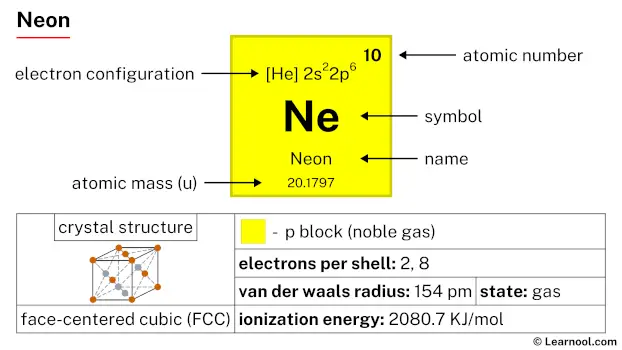 Neon |
|||||||||||
| 3 | 11 Na 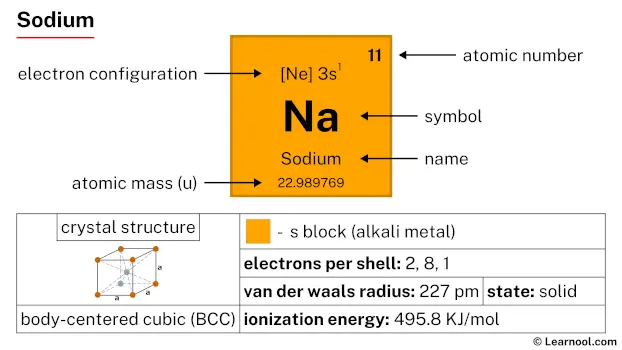 Sodium |
12 Mg 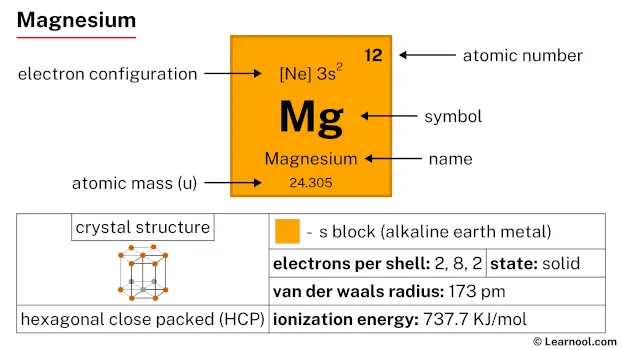 Magnesium |
13 Al  Aluminium |
14 Si Silicon |
15 P 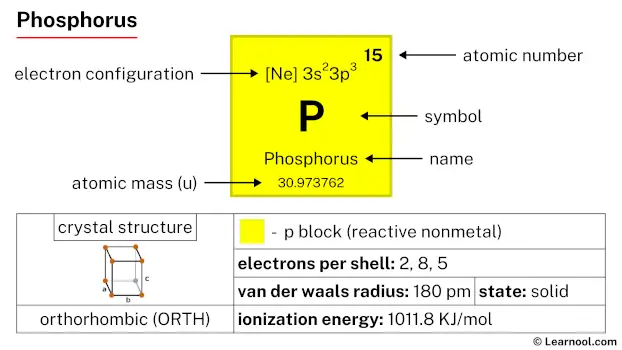 Phosphorus |
16 S 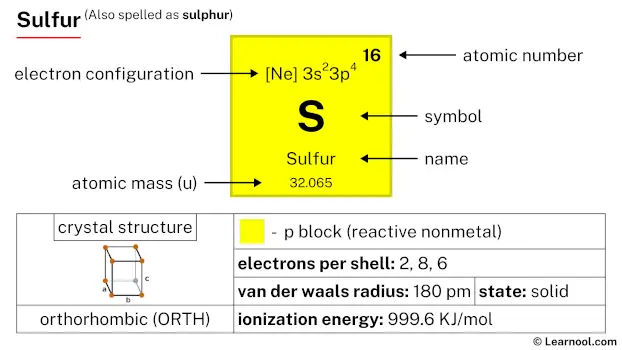 Sulfur |
17 Cl 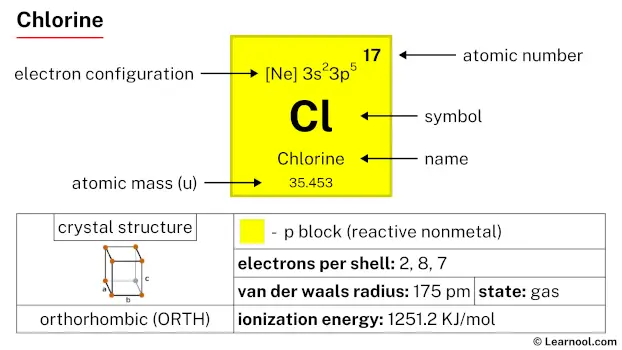 Chlorine |
18 Ar 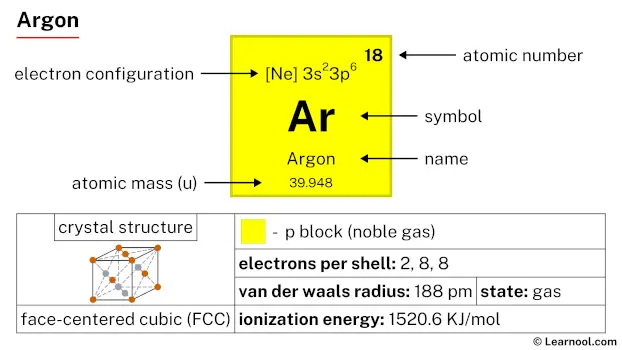 Argon |
|||||||||||
| 4 | 19 K 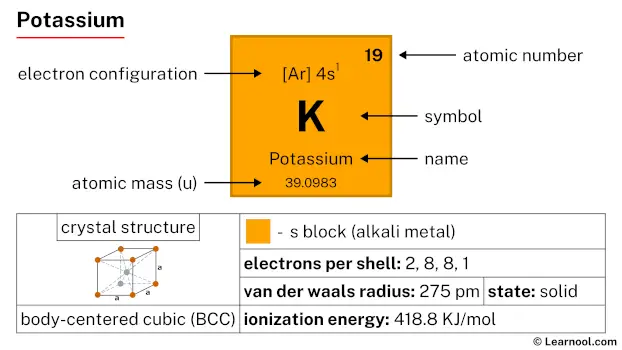 Potassium |
20 Ca 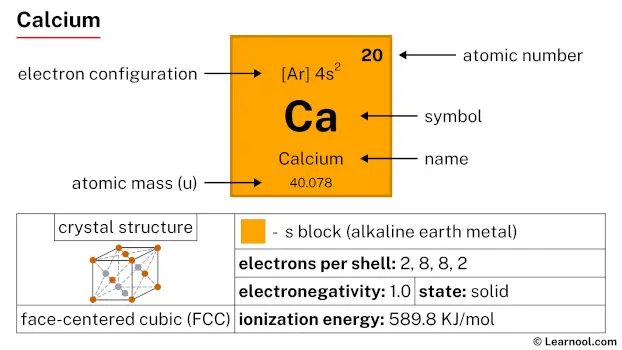 Calcium |
21 Sc 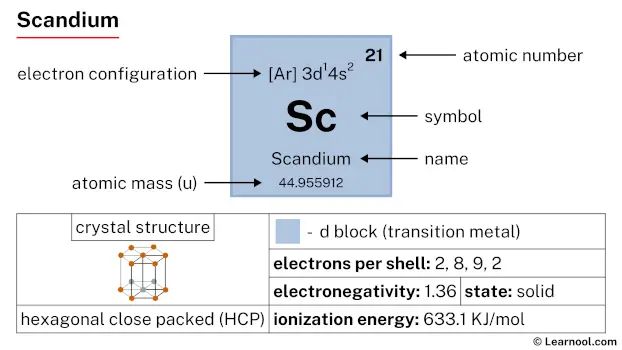 Scandium |
22 Ti 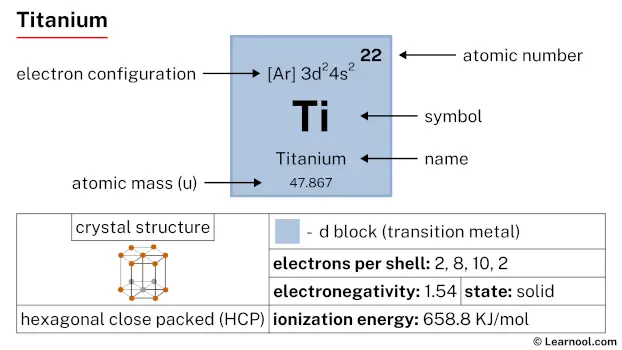 Titanium |
23 V 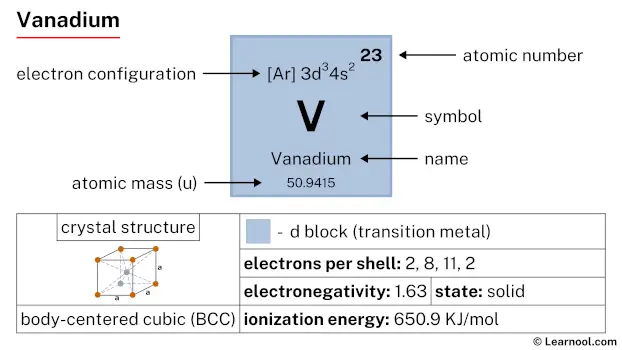 Vanadium |
24 Cr 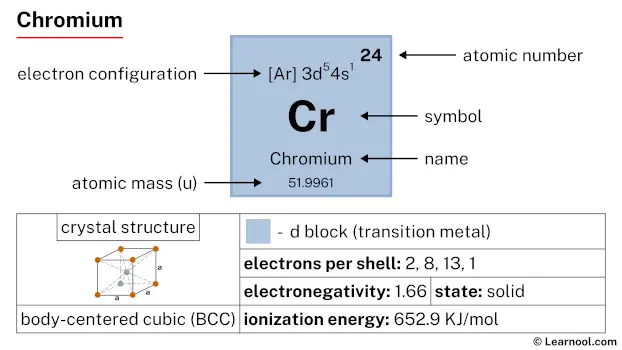 Chromium |
25 Mn 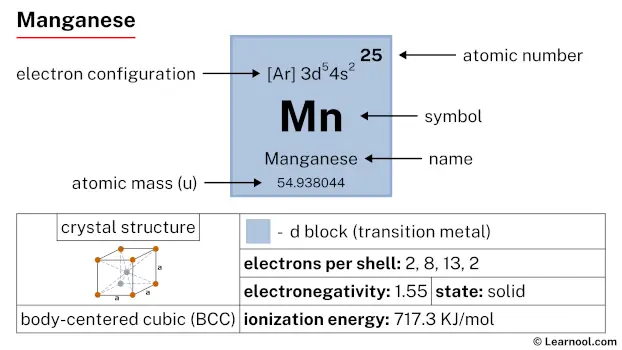 Manganese |
26 Fe 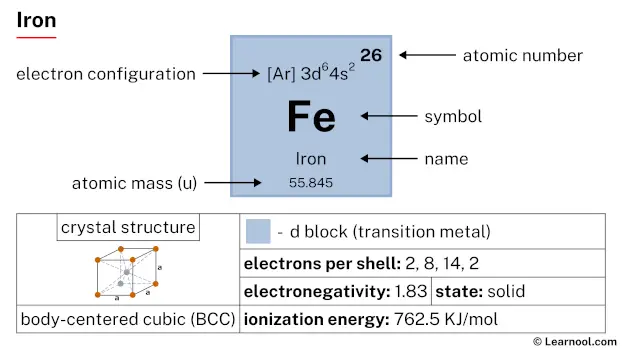 Iron |
27 Co 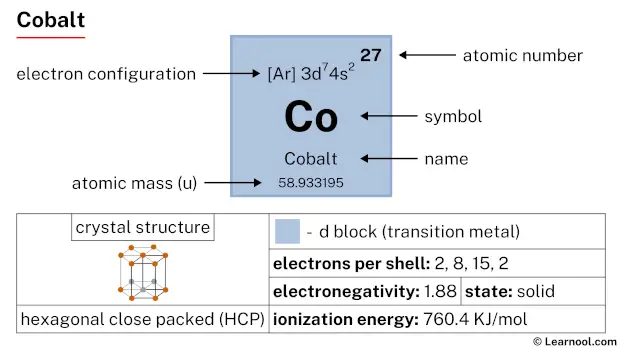 Cobalt |
28 Ni 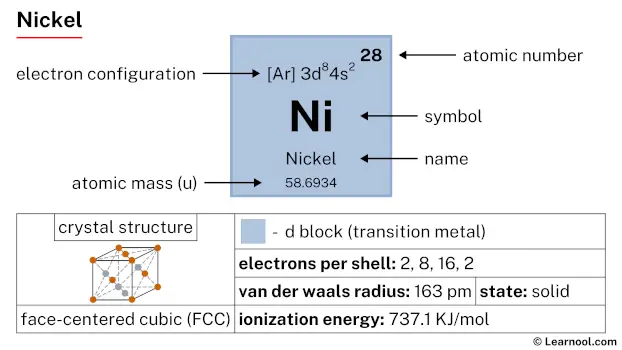 Nickel |
29 Cu Copper |
30 Zn  Zinc |
31 Ga 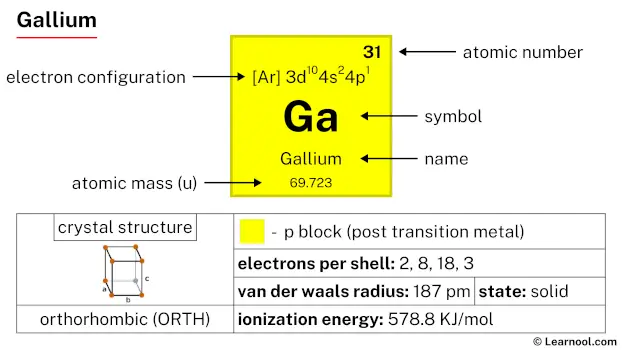 Gallium |
32 Ge 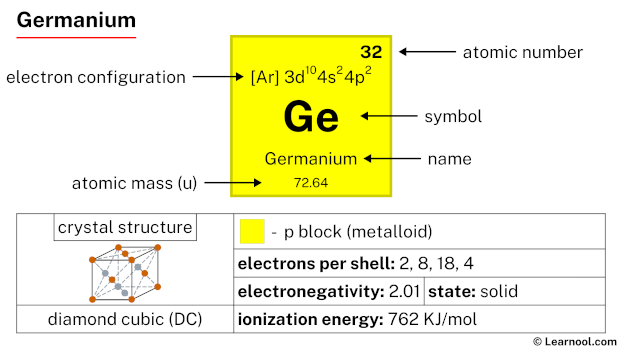 Germanium |
33 As 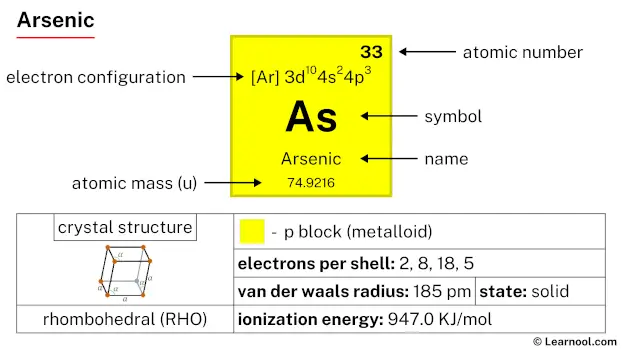 Arsenic |
34 Se 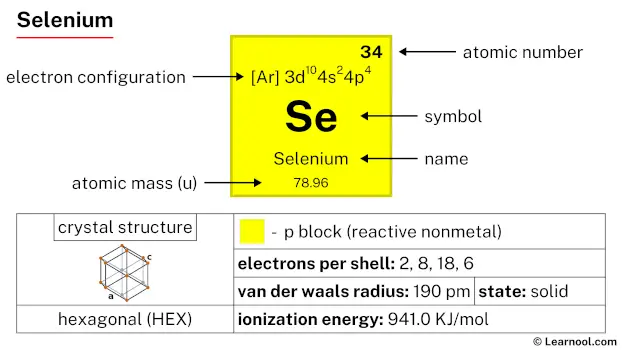 Selenium |
35 Br 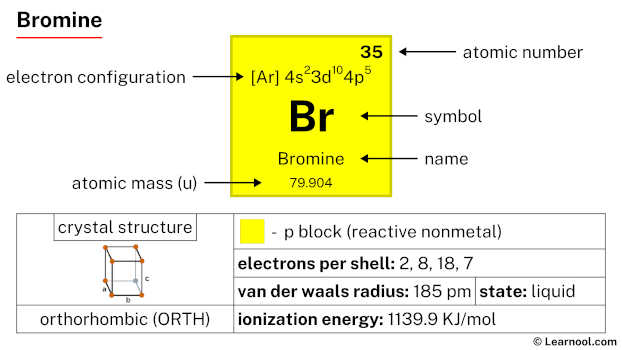 Bromine |
36 Kr  Krypton |
|
| 5 | 37 Rb 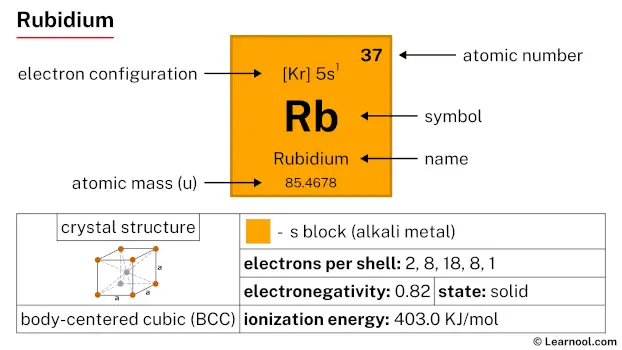 Rubidium |
38 Sr 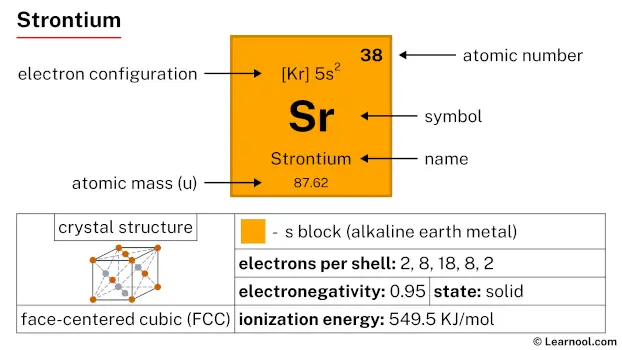 Strontium |
39 Y 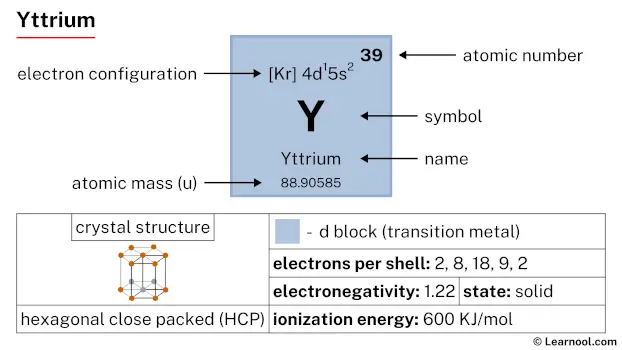 Yttrium |
40 Zr 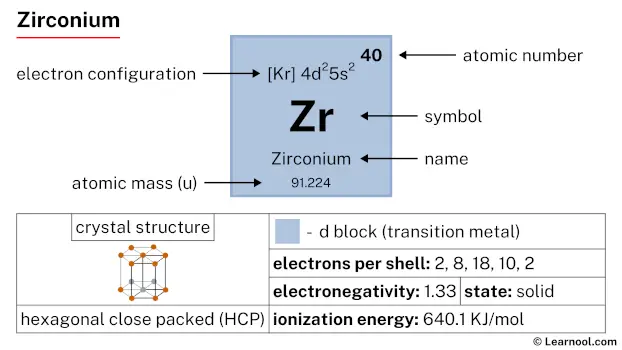 Zirconium |
41 Nb 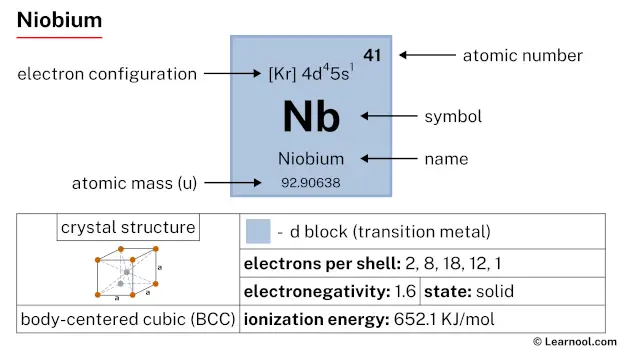 Niobium |
42 Mo 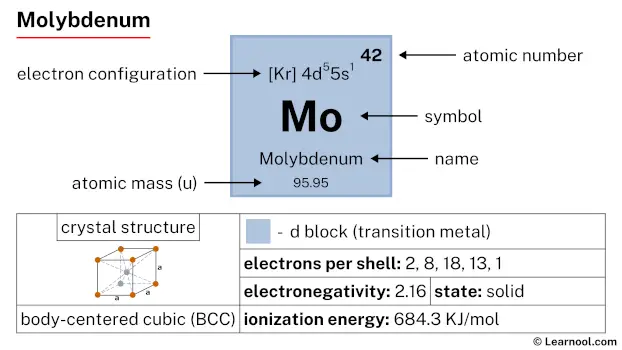 Molybdenum |
43 Tc 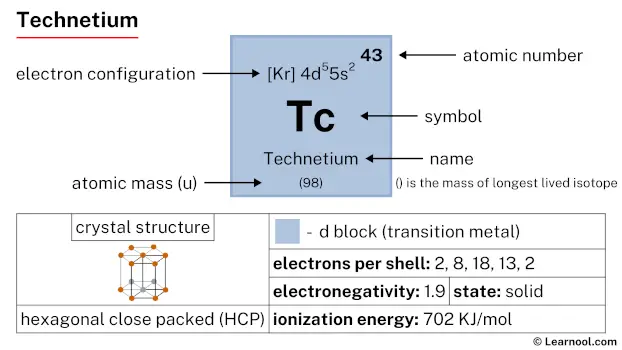 Technetium |
44 Ru 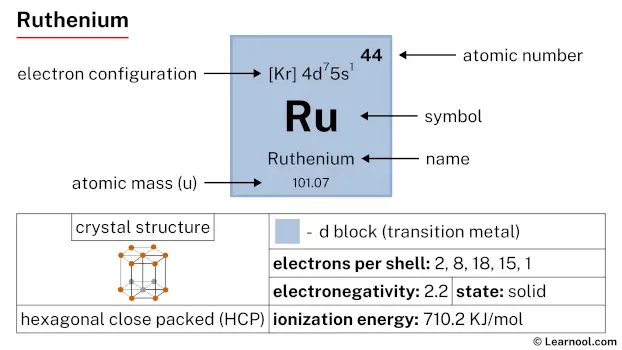 Ruthenium |
45 Rh 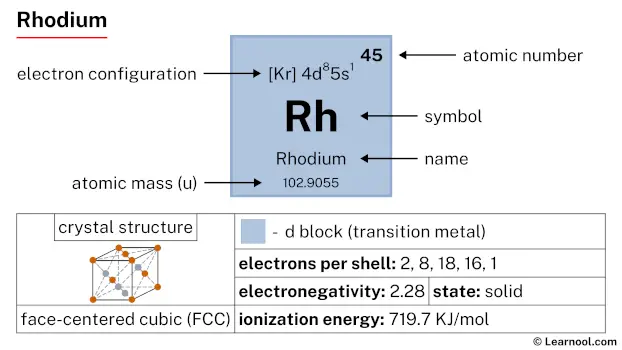 Rhodium |
46 Pd  Palladium |
47 Ag  Silver |
48 Cd 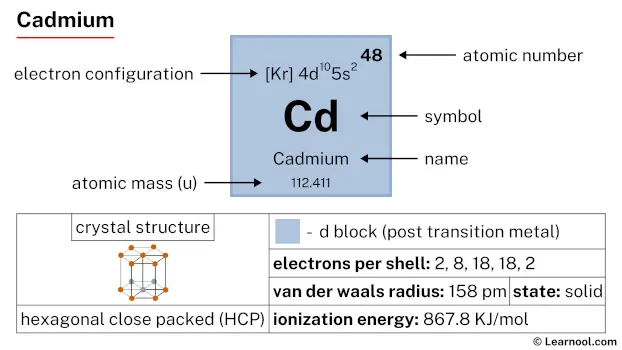 Cadmium |
49 In 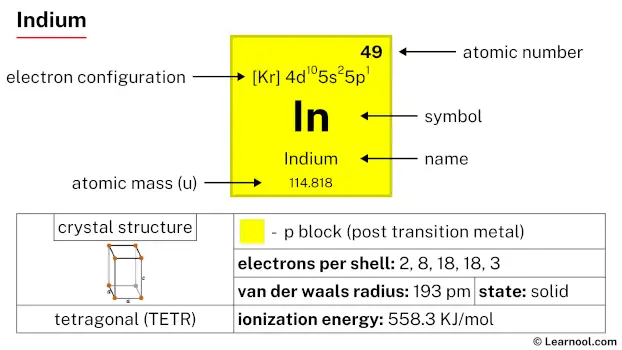 Indium |
50 Sn 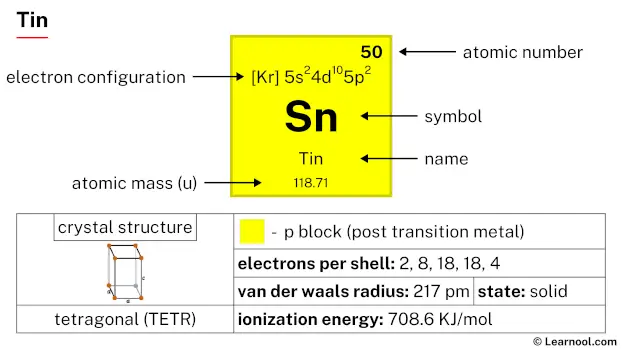 Tin |
51 Sb 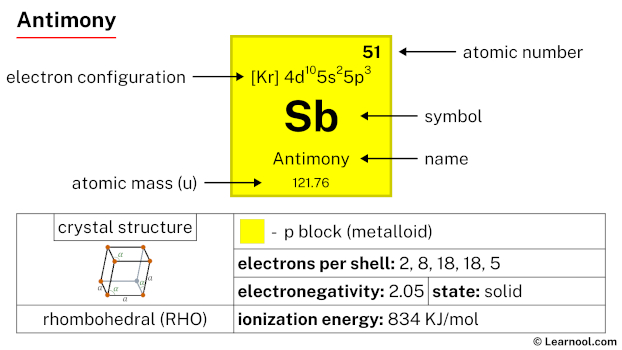 Antimony |
52 Te 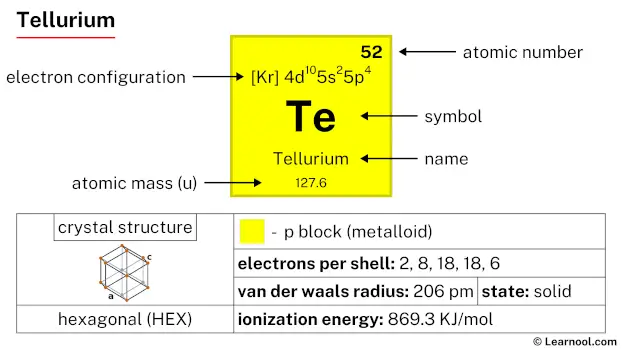 Tellurium |
53 I 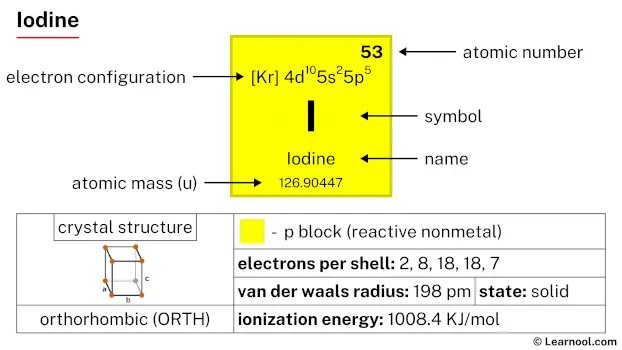 Iodine |
54 Xe 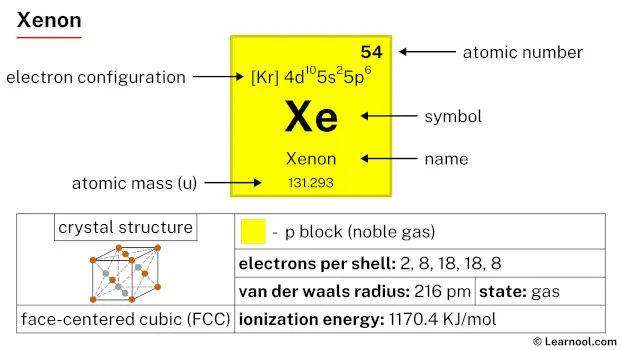 Xenon |
|
| 6 | 55 Cs 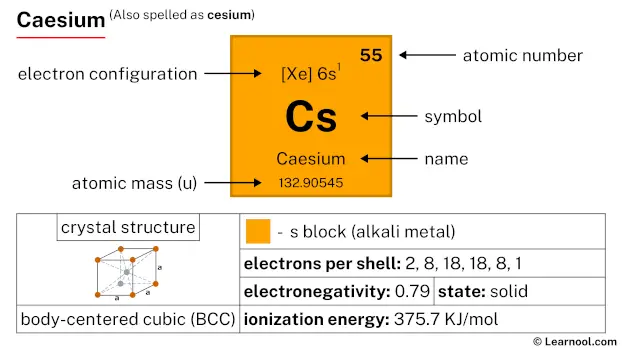 Caesium |
56 Ba 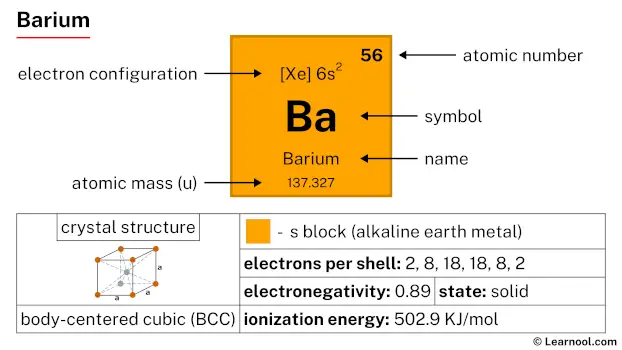 Barium |
72 Hf 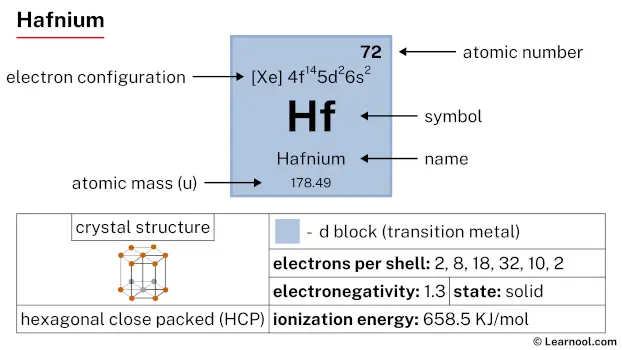 Hafnium |
73 Ta 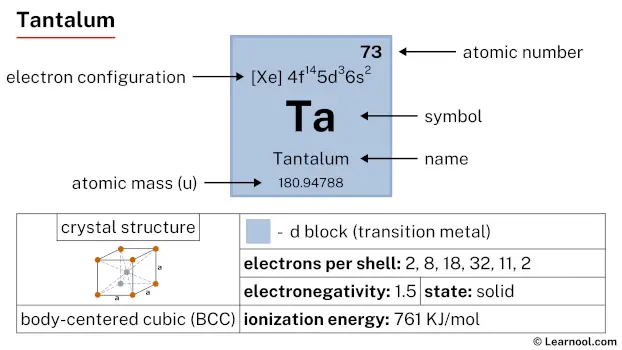 Tantalum |
74 W 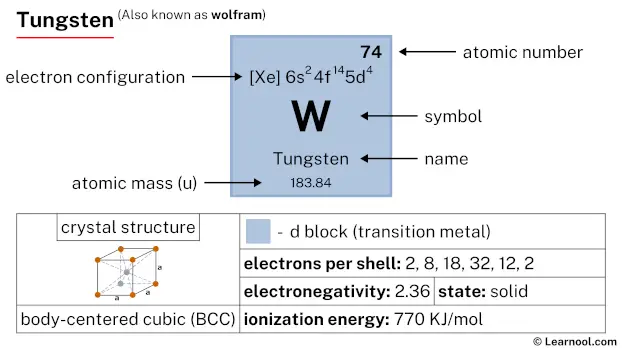 Tungsten |
75 Re 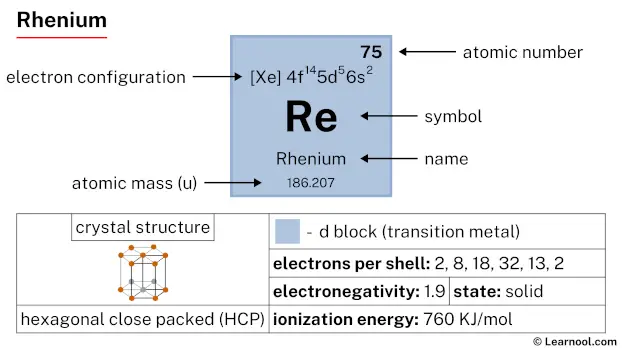 Rhenium |
76 Os 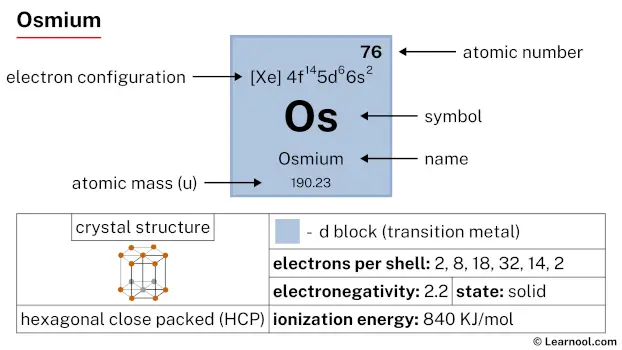 Osmium |
77 Ir 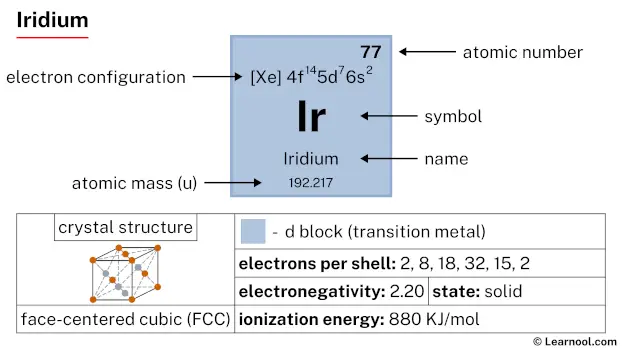 Iridium |
78 Pt  Platinum |
79 Au  Gold |
80 Hg 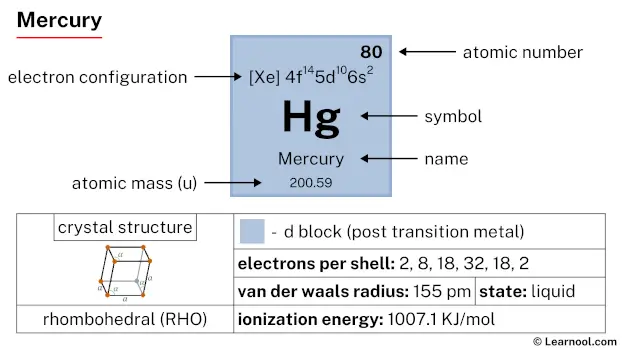 Mercury |
81 Tl 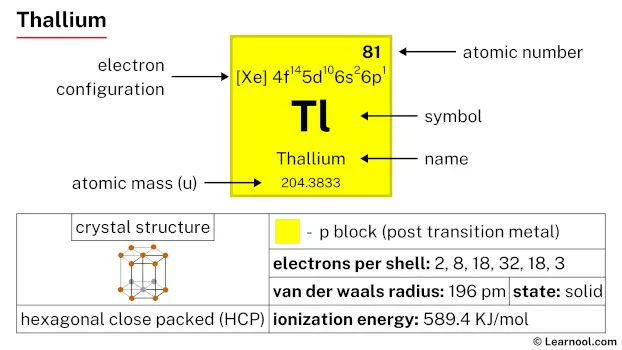 Thallium |
82 Pb  Lead |
83 Bi 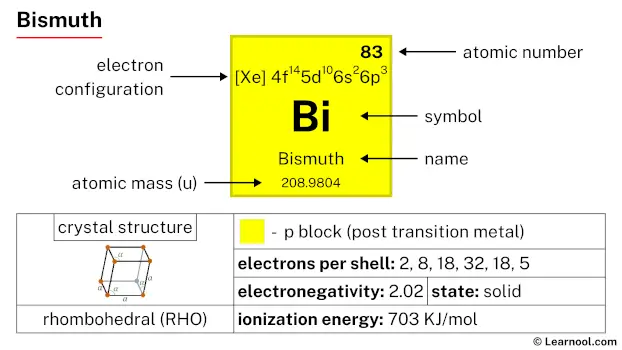 Bismuth |
84 Po 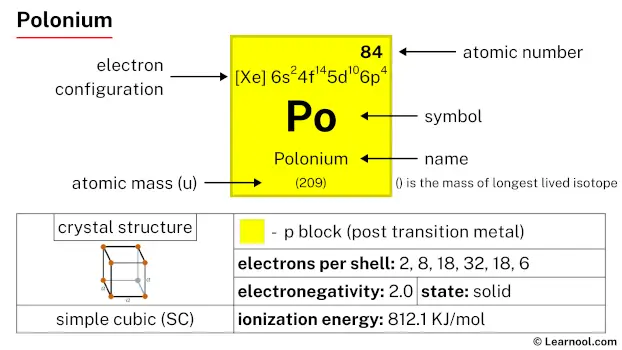 Polonium |
85 At 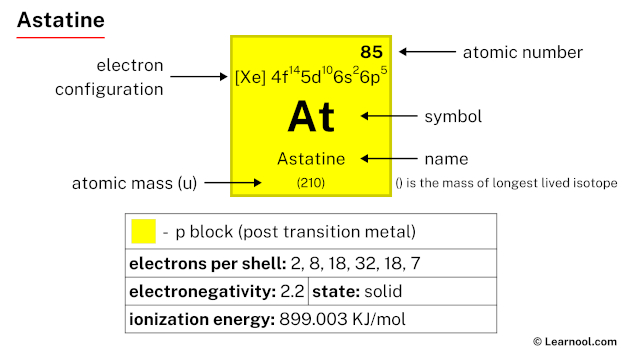 Astatine |
86 Rn 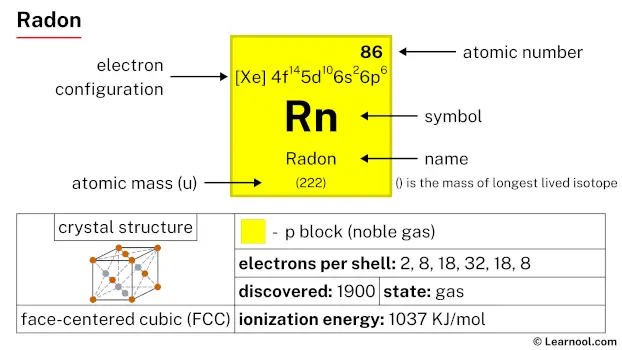 Radon |
||
| 7 | 87 Fr 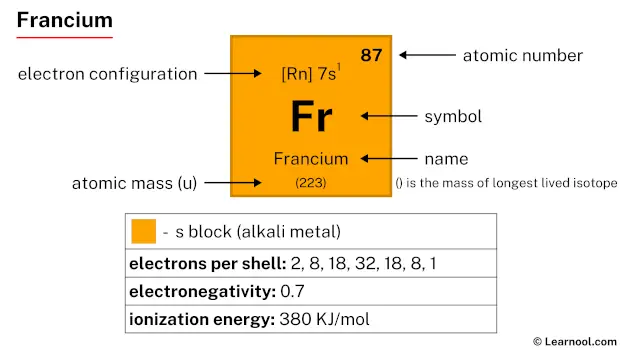 Francium |
88 Ra 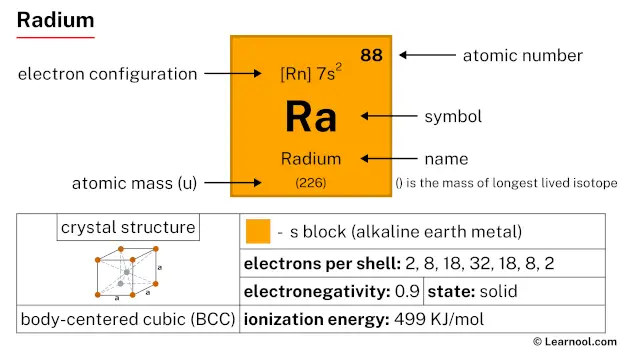 Radium |
104 Rf 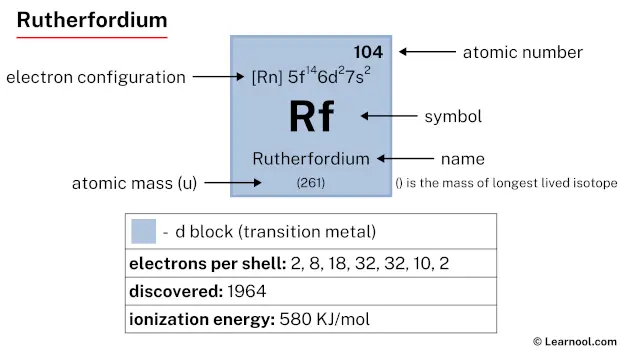 Rutherfordium |
105 Db 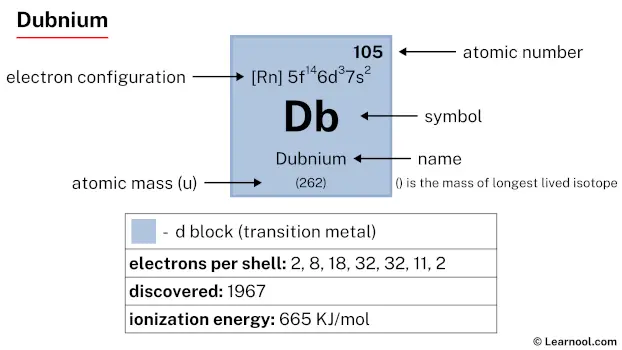 Dubnium |
106 Sg 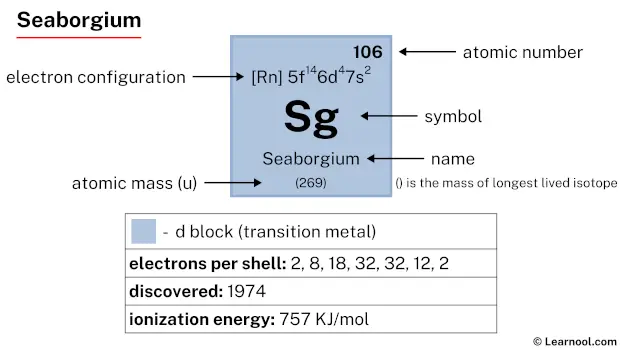 Seaborgium |
107 Bh 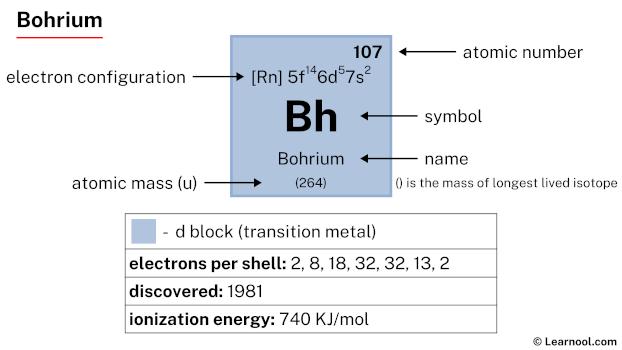 Bohrium |
108 Hs 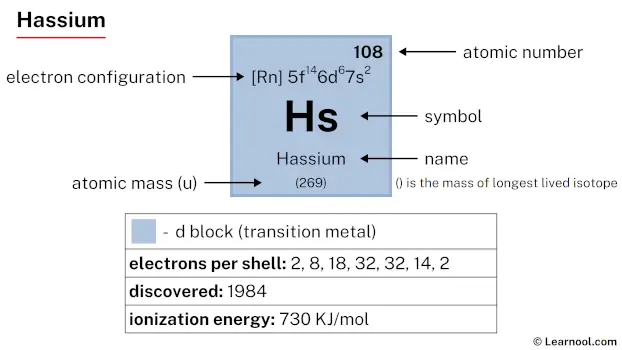 Hassium |
109 Mt 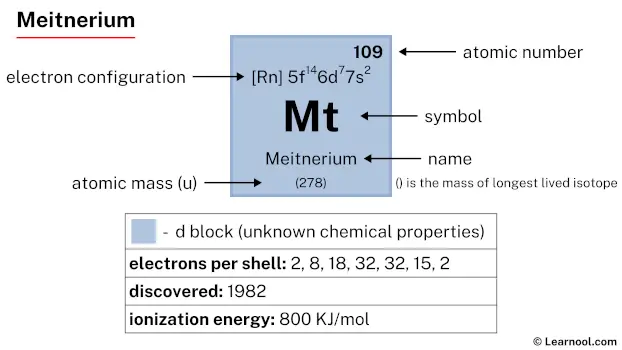 Meitnerium |
110 Ds 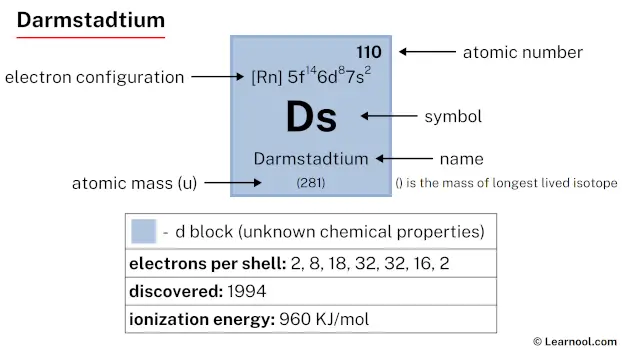 Darmstadtium |
111 Rg 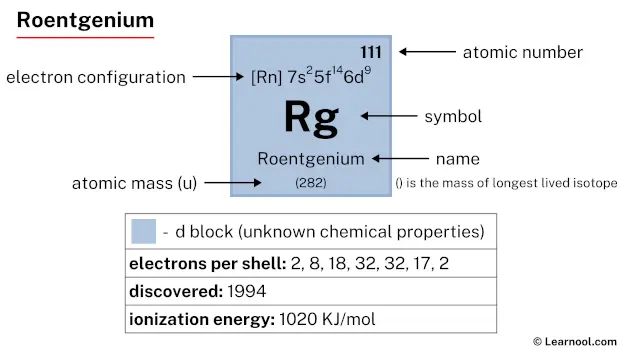 Roentgenium |
112 Cn  Copernicium |
113 Nh 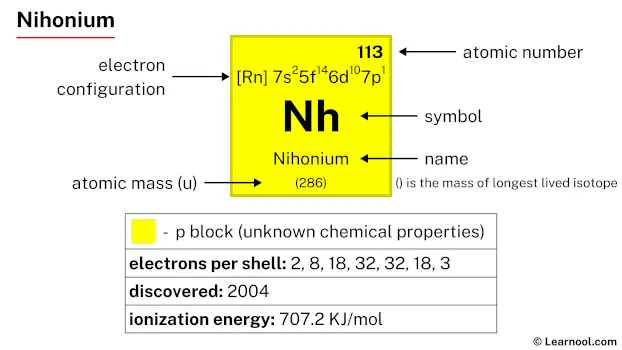 Nihonium |
114 Fl 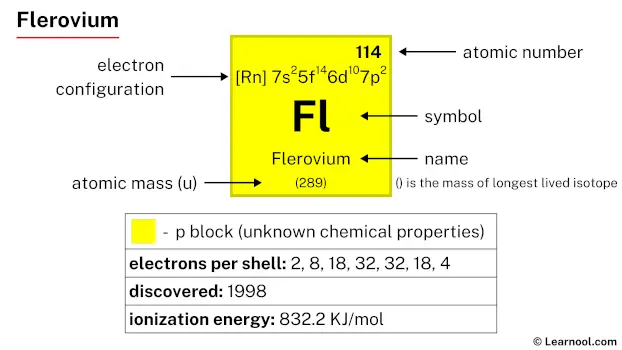 Flerovium |
115 Mc 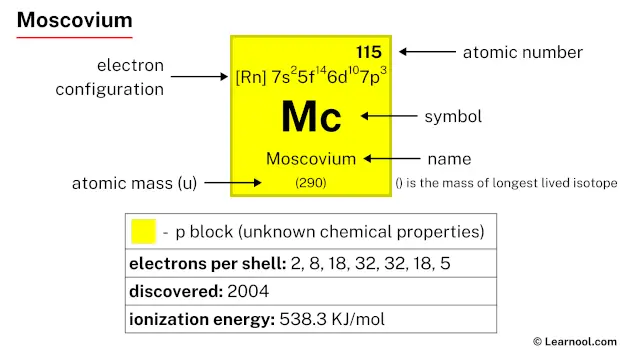 Moscovium |
116 Lv 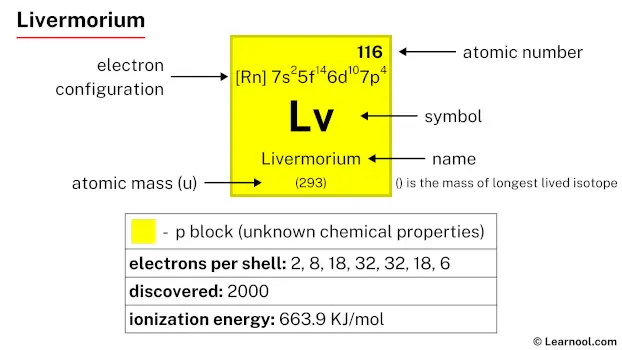 Livermorium |
117 Ts 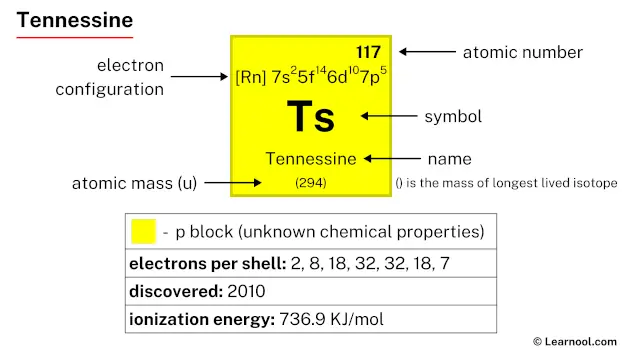 Tennessine |
118 Og 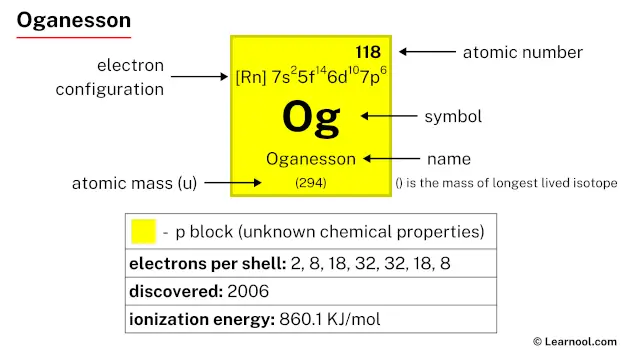 Oganesson |
||
| 57 La 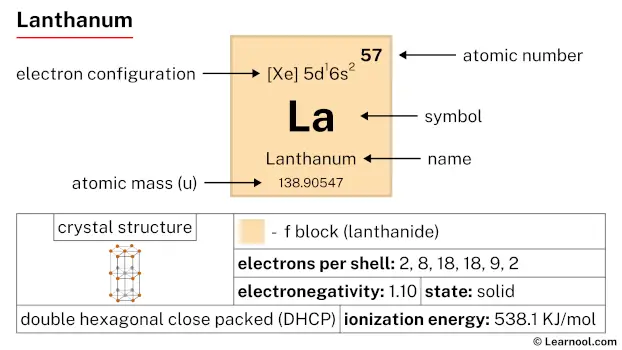 Lanthanum |
58 Ce 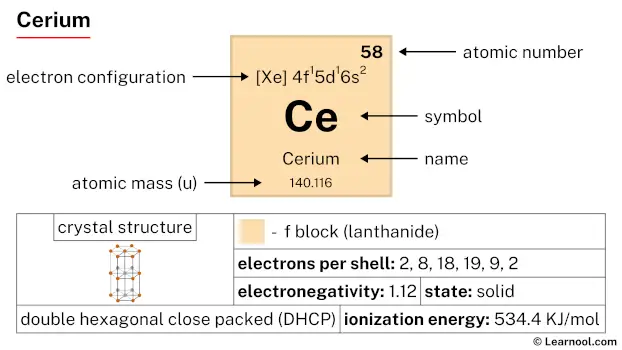 Cerium |
59 Pr 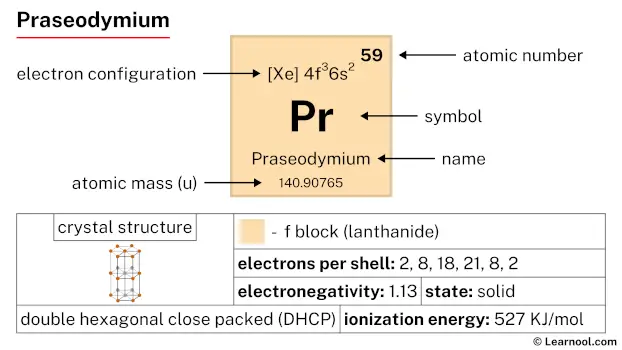 Praseodymium |
60 Nd 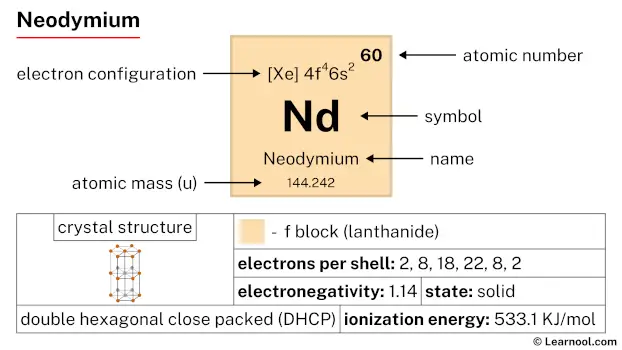 Neodymium |
61 Pm 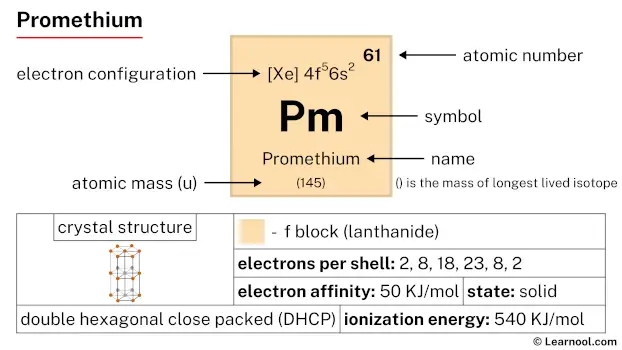 Promethium |
62 Sm 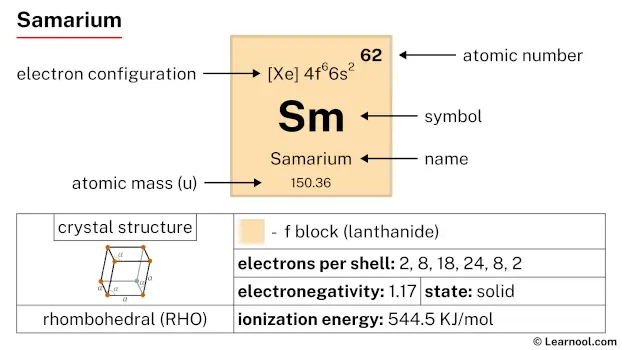 Samarium |
63 Eu 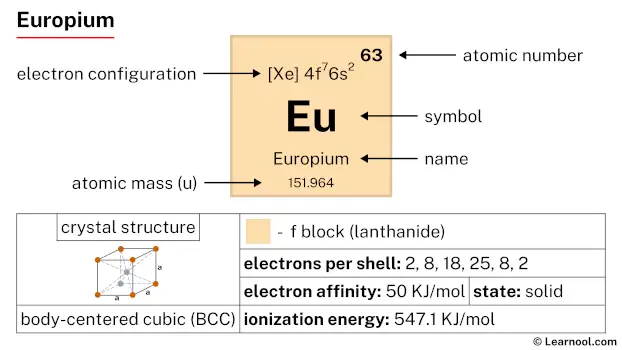 Europium |
64 Gd 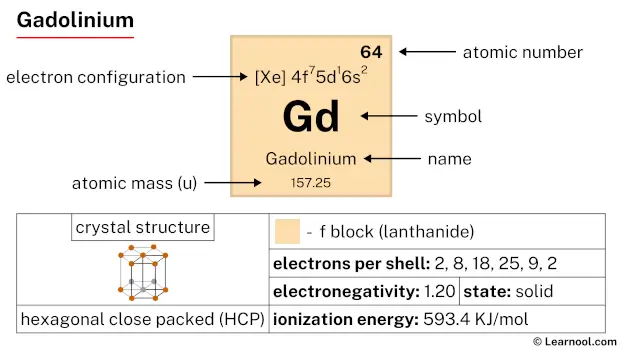 Gadolinium |
65 Tb 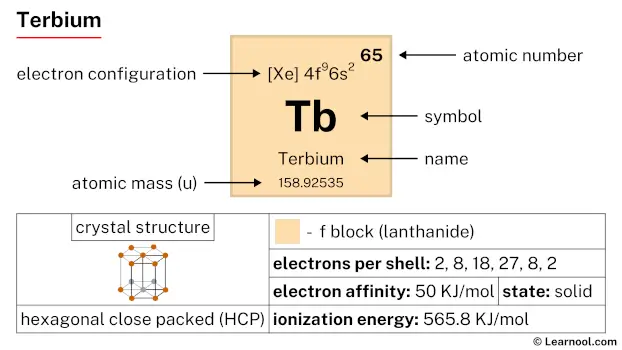 Terbium |
66 Dy 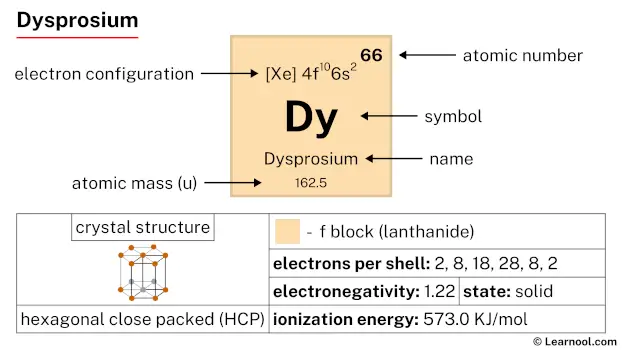 Dysprosium |
67 Ho 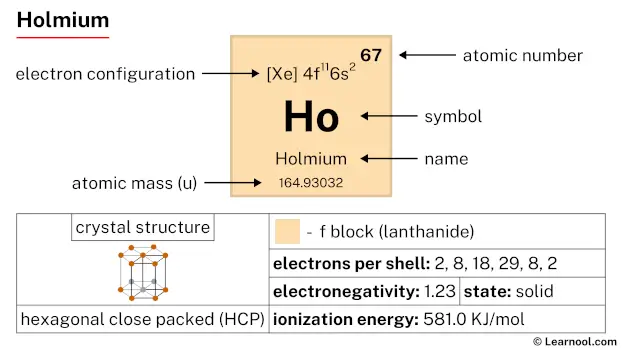 Holmium |
68 Er 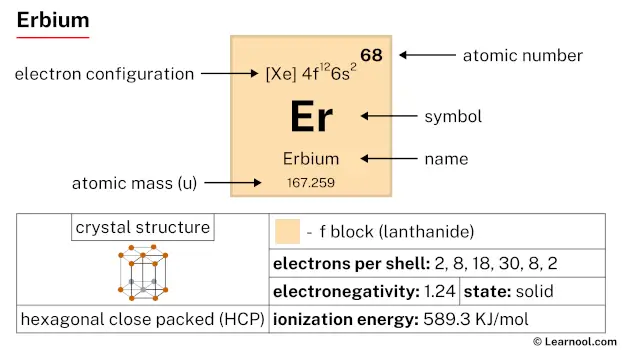 Erbium |
69 Tm 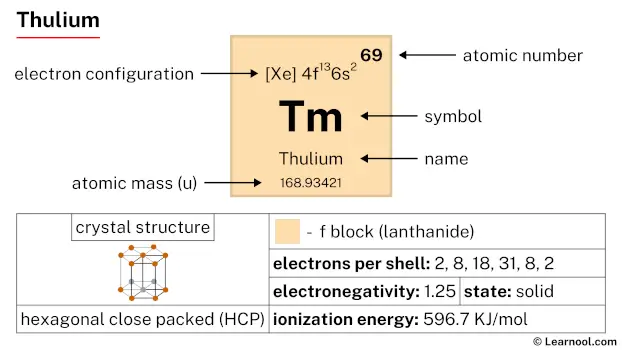 Thulium |
70 Yb 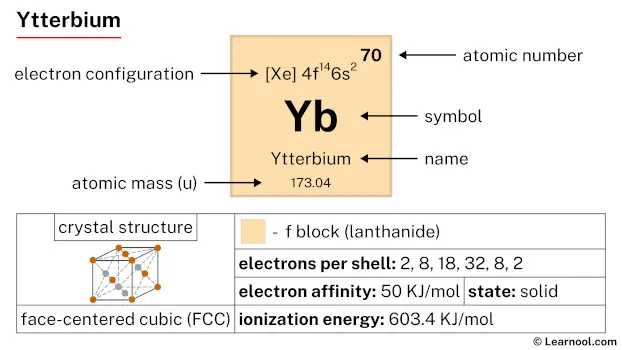 Ytterbium |
71 Lu 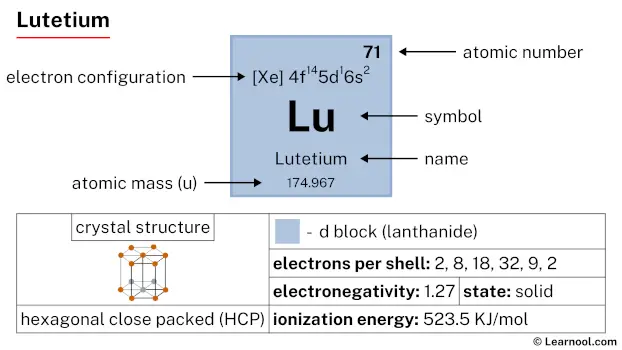 Lutetium |
|||||
| 89 Ac 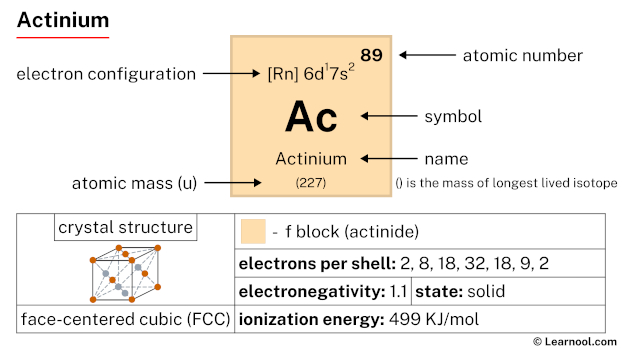 Actinium |
90 Th 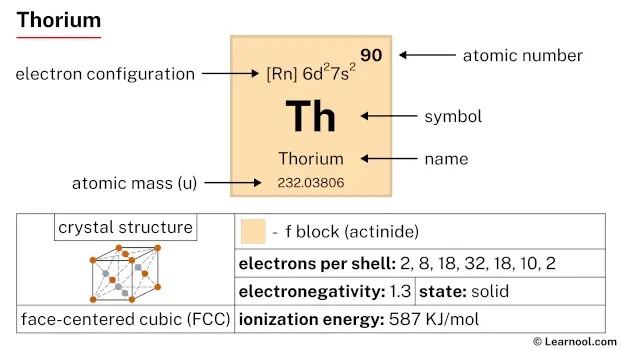 Thorium |
91 Pa 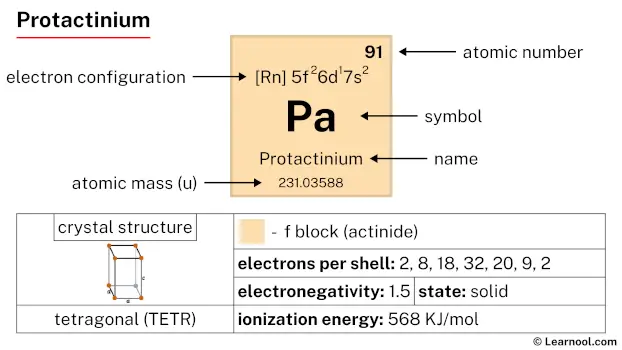 Protactinium |
92 U 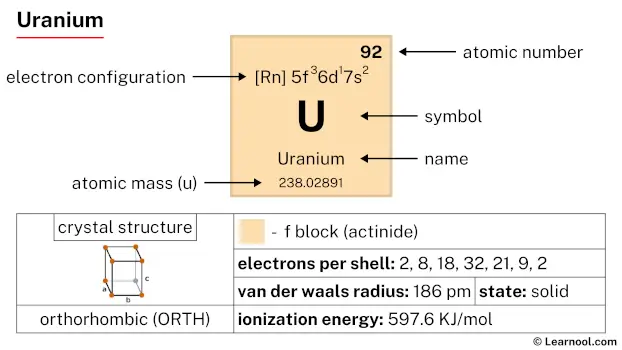 Uranium |
93 Np 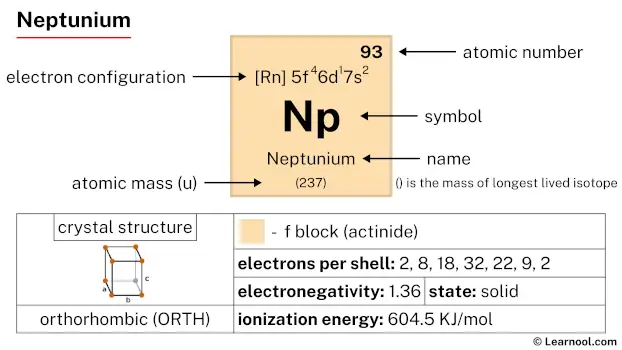 Neptunium |
94 Pu 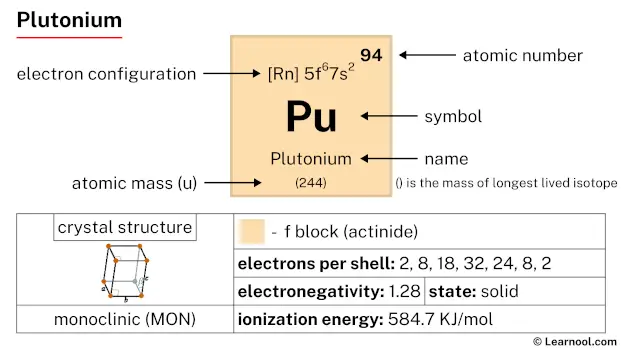 Plutonium |
95 Am  Americium |
96 Cm 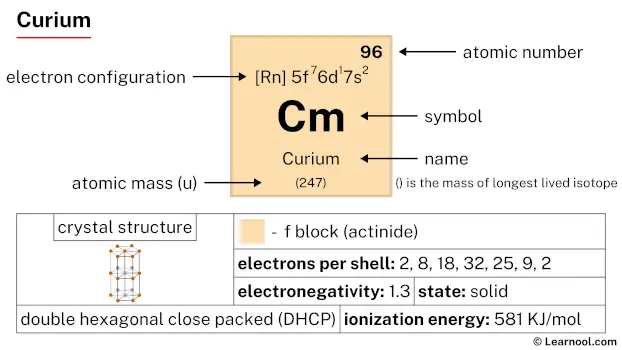 Curium |
97 Bk 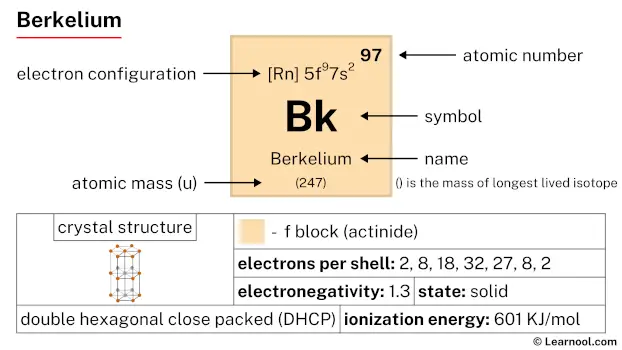 Berkelium |
98 Cf 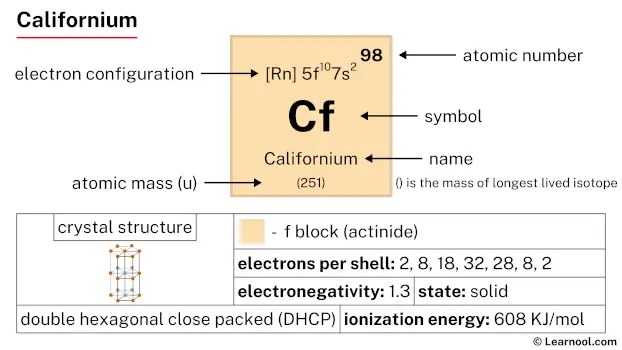 Californium |
99 Es 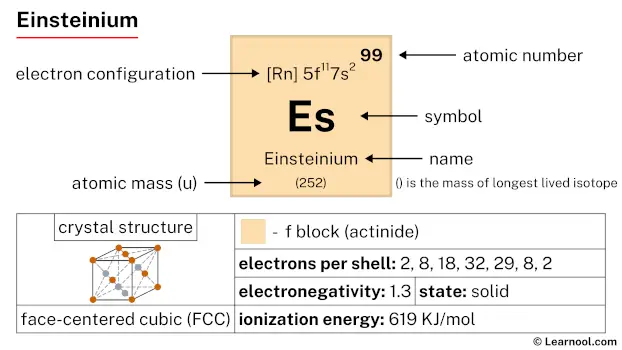 Einsteinium |
100 Fm 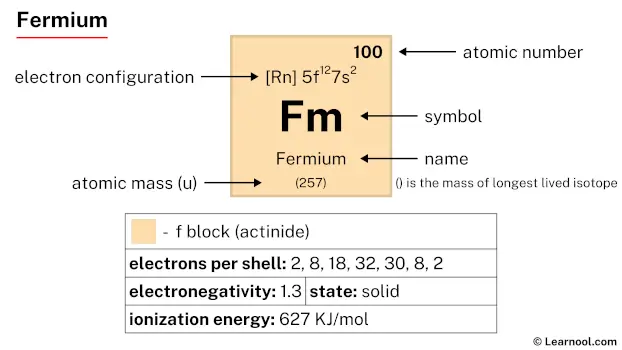 Fermium |
101 Md 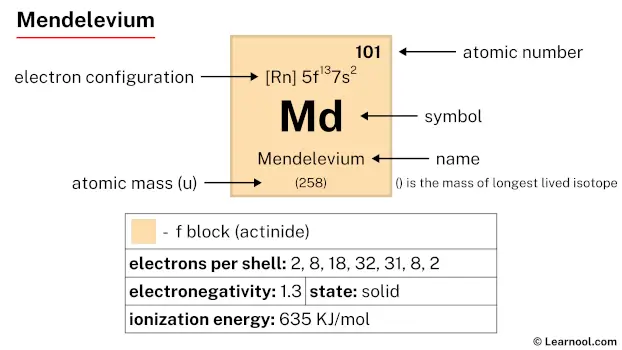 Mendelevium |
102 No  Nobelium |
103 Lr  Lawrencium |
|||||
| – d block |
Copper is a d-block element, found in the eleventh column and the fourth row of the periodic table. It has the atomic number 29 and is denoted by the symbol Cu.
Element information
 |
|
 |
|
| Origin of name | named after Cyprus, principal mining place in Roman era |
| Symbol | Cu |
| Atomic number (Z) | 29 |
| Atomic mass | 63.546 u |
| Block | d-block |
| Group | 11 |
| Period | 4 |
| Classification | Transition metal |
| Atomic radius | 128 pm |
| Covalent radius | 132±4 pm |
| Van der Waals radius | 140 pm |
| Melting point | 1084.62 ℃, 1984.32 ℉, 1357.77 K |
| Boiling point | 2562 ℃, 4643 ℉, 2835 K |
| Electron configuration | [Ar] 3d10 4s1 |
| Electrons per shell | 2, 8, 18, 1 |
| Learn how to draw: Copper Bohr model | |
| Crystal structure | Face-centered cubic (fcc) |
| Phase at r.t | Solid |
| Density near r.t | 8.96 g/cm3 |
| Main isotopes | Copper-63, Copper-65 |
| Natural occurrence | Primordial |
| Oxidation state | +1, +2 |
| Electronegativity (Pauling scale) | 1.90 |
| Protons Neutrons Electrons |
29 34 29 |
| Learn how to find: Copper protons neutrons electrons | |
| CAS number | 7440-50-8 |
| Discovered by | Mesopotamians around 9000 BC |
History
Copper has been known and used by humans for thousands of years. The first evidence of copper mining dates back to 5000 BCE in what is now modern-day Iraq. Ancient civilizations including the Egyptians, Greeks, and Romans used copper for various purposes such as tools, weapons, and decorative objects.
The name “copper” comes from the Latin word “cuprum” which means “from the island of Cyprus”. This is because the ancient Greeks obtained a significant amount of their copper supply from the island.
In the modern era, copper was first discovered in its metallic form in the mid-18th century by Swedish chemist Axel Fredrik Cronstedt. Prior to this, copper was mainly obtained through the smelting of its ores. Cronstedt named the element “kupfernickel” which means “copper demon” because the ore from which he obtained it was thought to contain copper but did not.
Occurrence and production
Copper is a widely distributed metal that is found in various minerals and ores. The most common copper minerals are chalcopyrite, bornite, malachite, and chalcocite. Copper deposits are found in many countries around the world, including Chile, Peru, the United States, Canada, Australia, Zambia, and the Democratic Republic of Congo.
The production of copper involves several steps. First, the copper ore is mined from the ground and then concentrated by crushing, grinding, and flotation. The resulting concentrate is then smelted in a furnace to produce copper matte, which is a mixture of copper, iron, and sulfur.
The matte is then converted into blister copper, which contains 98% copper, by blowing air into the molten material to oxidize the sulfur and remove it as a gas. Finally, the blister copper is refined by electrolysis to produce pure copper metal.
Copper production has a long history that dates back to ancient times. The earliest evidence of copper mining dates back to 5000 BCE in the Middle East, where copper was used for tools and decorative objects. In modern times, copper is widely used in various industries, including construction, electrical and electronics, transportation, and telecommunications.
Properties
Copper is a ductile and malleable metal, which means it can be easily formed into wires, sheets, and other shapes.
It has a high thermal and electrical conductivity, making it an ideal material for electrical wiring and heat transfer applications.
Copper has a reddish-orange color and is highly reflective, which makes it a popular material for decorative and architectural purposes.
It is a relatively soft metal, with a Mohs hardness of 3, and has a low melting point of 1084.62 ℃ (1984.32 ℉).
Copper is highly resistant to corrosion, making it a useful material in harsh environments such as marine and industrial applications.
The atomic number of copper is 29, and it has an atomic mass of 63.546 u.
It belongs to group 11 of the periodic table and has a density of 8.96 g/cm3.
Copper is a relatively abundant element, ranking 25th in the Earth’s crust, and is commonly found in minerals such as chalcopyrite, bornite, and malachite.
Applications
Copper is widely used in electrical wiring due to its high electrical conductivity.
It is also used in the construction industry for roofing, plumbing, and heating systems.
Copper alloys, such as brass and bronze, are used in the manufacturing of various products including musical instruments, jewelry, and decorative items.
Copper is an important component in the production of coins, particularly in the US penny and Euro coins.
Copper compounds are used in agriculture as fungicides and pesticides.
The metal is also used in the healthcare industry for medical instruments and implants.
In recent years, copper has gained attention for its antimicrobial properties and has been incorporated into surfaces such as door handles and handrails to reduce the spread of germs.
Interesting facts
Copper has been used by humans for over 10,000 years, making it one of the oldest metals known to mankind.
The word “copper” is derived from the Latin word “cuprum”, which means “from the island of Cyprus”. This is because copper was mined extensively on the island in ancient times.
Copper is a good conductor of heat and electricity, which makes it an essential component in electrical wiring and electronic devices.
The Statue of Liberty, one of the most famous landmarks in the world, is made almost entirely of copper.
Copper is an essential nutrient for humans, playing a vital role in the formation of red blood cells and the maintenance of a healthy immune system.
Copper is a relatively soft metal, which means it can be easily shaped and molded into various forms. This has made it a popular material for decorative art and jewelry.
Copper has natural antimicrobial properties, which makes it useful in a variety of applications such as water filtration systems, hospital surfaces, and even socks designed to prevent foot odor.
Copper is also an important component in various industrial applications, including construction, transportation, and renewable energy technologies such as wind turbines and solar panels.
Related
More elements
External links
- https://www.rsc.org/periodic-table/element/29/copper
- https://en.wikipedia.org/wiki/Copper
- https://www.britannica.com/science/copper
- https://pubchem.ncbi.nlm.nih.gov/element/Copper
- https://www.livescience.com/29377-copper.html
- https://www.chemicool.com/elements/copper.html
- https://www.ducksters.com/science/chemistry/copper2.php
- https://chemistrytalk.org/copper-element/
- https://www.thoughtco.com/interesting-copper-element-facts-603357
Deep
Learnool.com was founded by Deep Rana, who is a mechanical engineer by profession and a blogger by passion. He has a good conceptual knowledge on different educational topics and he provides the same on this website. He loves to learn something new everyday and believes that the best utilization of free time is developing a new skill.
